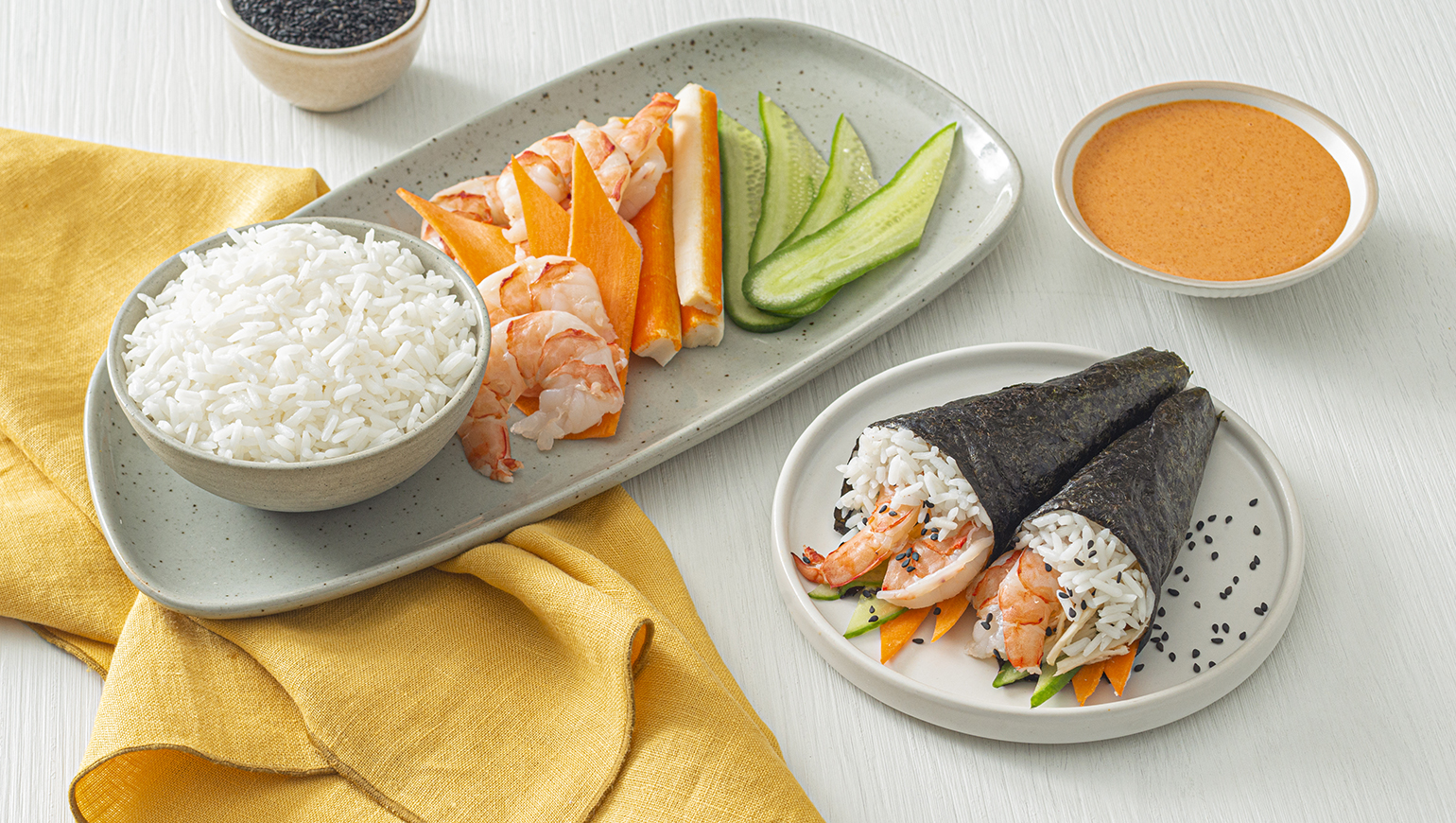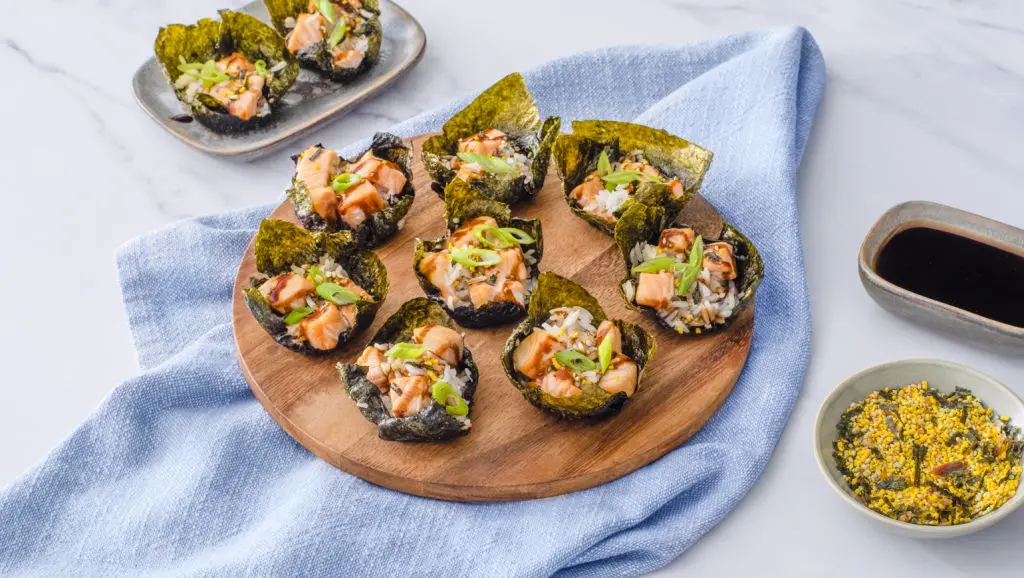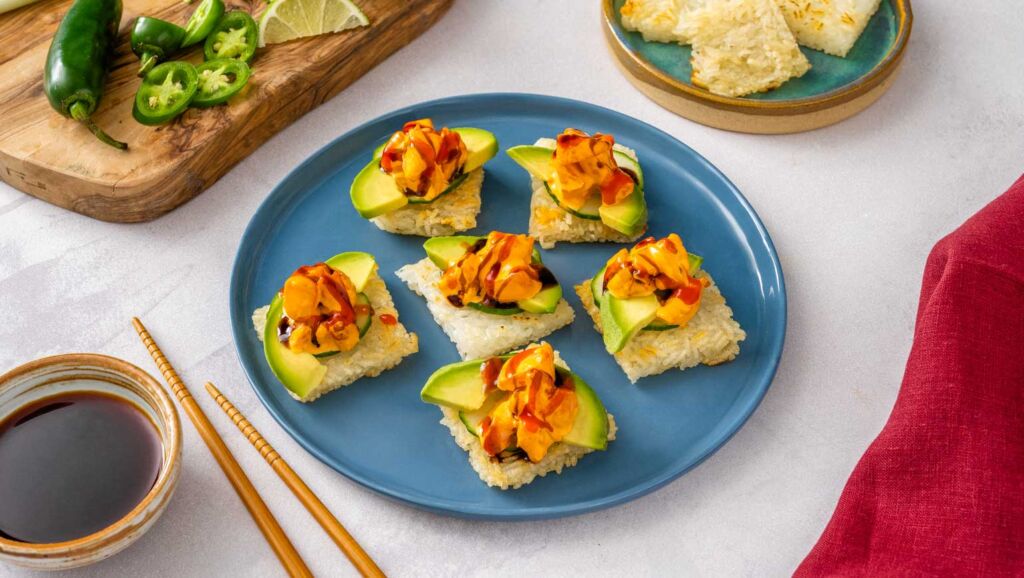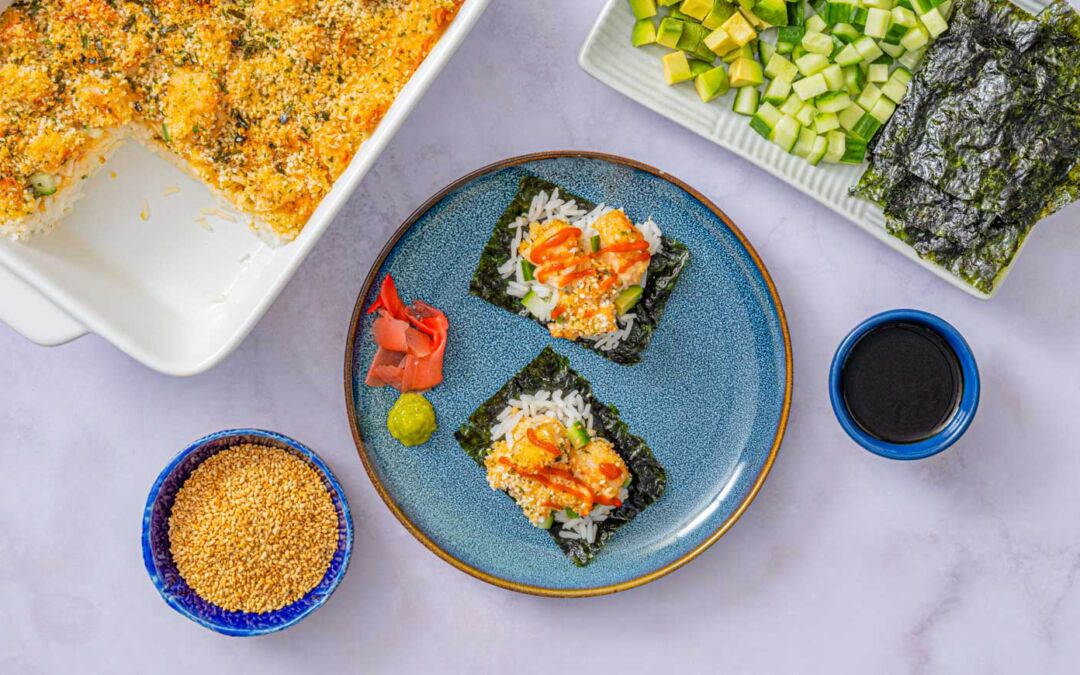Sushi is best made by professionals. Right? No way! A gratifying kitchen project for ambitious home cooks, sushi is a dish that you can make with a little planning and a kitchen stocked with the right tools and ingredients. Chief among those ingredients, is the right rice. Though experts believe that the best rice for sushi is a short-grain variety from Japan, it’s not the only option for tasty maki, nigiri and hand rolls. Can you use jasmine rice for sushi? Absolutely! With the right approach, you can learn to transform jasmine rice, along with fresh vegetables, fish and seafood, nori and rice vinegar into tasty sushi-inspired dishes. Though the techniques to flawless sushi can take years to perfect, there’s no time like the present to start experimenting with sushi making at home.
Differences Between Jasmine Rice and Traditional Sushi Rice
Traditionally, sushi is made with Japanese short-grain rice that is seasoned with rice vinegar. Plump and round, with high levels of starch, short-grain rice is able to hold moisture more effectively than long-grain rice varieties. A type of glutinous rice, short-grain rice tends to stick and clump together once cooked.
In comparison, jasmine is a long-grain, slender type of rice. Lightly aromatic, jasmine rice is slightly chewy and soft when cooked, though its grains remain separate, as it’s a non-sticky variety.
Best Rice for Sushi
One of the main components in maki, nigiri and hand rolls, rice is key to any successful piece of sushi. Around the globe, sushi chefs use short-grain rice, for its sticky texture, flavor and the way it can be molded into the desired shape for each dish. In the absence of Japanese rice varieties, many cooks turn to arborio, a variety of short-grain rice from Italy.
Long- and medium-grain rice varieties are not generally used for making sushi, as they lack the starch that sushi chefs seek. In a pinch, though, and with a few tweaks to water ratios and cooking methods, you can make a long-grain variety, such as jasmine, work for many sushi-inspired recipes.

How to Make Sushi Rice
Making sushi rice is an art form that serious sushi masters take years to perfect! Happily, even the non-professionals among us can follow handy tips, tricks and recipes to ensure tasty sushi rice every time.
Sushi Rice Cooking Methods
Making sushi rice doesn’t require special equipment but it does require some know-how. Many experts use a rice cooker, and rely on a 1:1 ratio of sushi rice to water for the ideal texture. Sushi rice is generally rinsed in several changes of cool water before cooking.
To cook sushi rice on the stovetop, begin by rinsing the rice. Then, add equal parts water and rice to a medium saucepan. Bring to a boil, reduce the heat and cook, covered, until the rice is tender and the water has been absorbed, about 20 minutes.
If you prefer to cook your rice in a microwave, begin by rinsing the grains. Then, place 1 cup of rice and 1 1/2 cups of water in a large, microwave-safe dish. Microwave on HIGH, uncovered, for 8-10 minutes. Then, cover the dish with a microwave-safe lid or plastic wrap. Microwave on HIGH for an additional 3-4 minutes. Remove rice from the microwave and let it stand, covered, for 5 minutes.
Sushi Rice to Water Ratio
Using the right water-to-rice ratio is essential to cooking any type of rice, including sushi rice. For sushi rice with the right texture, a 1:1 ratio is preferred. The exception, is when cooking sushi rice in a microwave, which requires more water.
Interestingly, sushi experts are also choosy about the type of water they use! Many opt for filtered water, to avoid imparting the rice with any unpleasant flavors.
Don’t Skip the Seasoning
Sushi rice is naturally mellow and sweet, with a delicate flavor that partners perfectly with sushi’s other main ingredients. When preparing sushi rice for maki, nigiri and hand rolls, cooks heighten its natural flavor in several subtle ways. Many people replace some of the cooking water with sake (up to 2 tablespoons) to add umami to the final dish. Alternatively, you can add a piece of kombu, or edible kelp, to the cooking water when cooking sushi rice.
Once cooked, sushi rice is generally mixed with seasoned vinegar. To prepare it, simmer 2 tablespoons of rice vinegar with 2 teaspoons of sugar and 3/4 of a teaspoon of kosher salt until the granules have dissolved. Little by little, stir the seasoned vinegar into the rice as it cools, taking care not to crush the grains. Depending on your preferences, you may not need to use all of the seasoned vinegar.
How to Make Sushi with Jasmine Rice (If You Don’t Have a Better Option)
For the best homemade sushi, it’s best to use short-grain rice. But sometimes life has other plans! When sushi cravings hit and you only have jasmine rice on hand, you can still make something delicious!
As discussed, jasmine rice is a long-grain variety that’s less starchy than sushi rice. When using jasmine rice to make sushi, begin by soaking it for 30 minutes. Then, increase the water-to-rice ratio slightly, to 1 1/2 cups of water for every 1 cup of rice. Since jasmine rice absorbs water well, when cooked this way it will be stickier than usual.
Finally, to mimic the flavor of sushi rice, it’s essential to season it with sake or kombu as it cooks, plus seasoned vinegar as it cools.
Once the rice is prepped, gather your other fresh ingredients, plus a knife, cutting board and bamboo mat, and get rolling!

Other Sushi Inspired Dishes You Can Make with Jasmine Rice
Beyond traditional sushi rolls, there are plenty of other ways that you can use jasmine rice to make sushi at home. A sushi-inspired burrito, for example, mimics the flavors of sushi, but is far less finnicky to make, especially for beginners. On busy weeknights, this sushi bake is a warm and welcome departure from the norm. Cute enough for company, these baked Asian salmon cups are a novel spin on classic sushi flavors. Finally, a crispy base of jasmine rice is a delectable bed for zippy, fiery shrimp in this bold take on sushi pizza.

When it comes to making sushi, short-grain rice is the global gold standard. But can you use jasmine rice for sushi? With a little know-how and the right techniques, we can’t see why not! It won’t deliver the same results but this fragrant, delicious ingredient never disappoints. Find it, along with other Success® Rice products, at your local supermarket and tackle a world of globally-inspired dishes, right at home.

